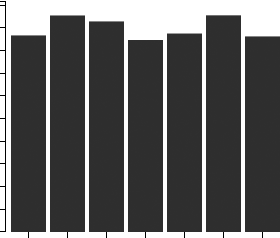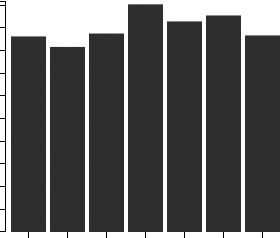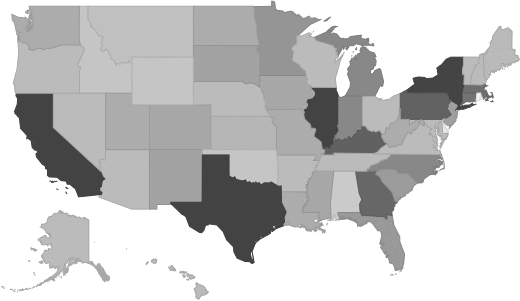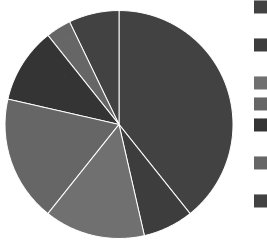Clay & Brick Manufacturing Industry - Market Research Report
Industry Overview
This industry comprises establishments primarily engaged in shaping, molding, baking, burning, or hardening clay refractories, nonclay refractories, ceramic tile, structural clay tile, brick, and other structural clay building materials. A refractory is a material that will retain its shape and chemical identity when subjected to high temperatures and is used in applications that require extreme resistance to heat, such as furnace linings.
Source: U.S. Census BureauMarket Size and Industry Forecast
This research report analyzes the market size and trends in the Clay and Brick Manufacturing industry. It shows overall market size from 2020 to the present, and predicts industry growth through 2030. Revenues data include both public and private companies.
| Historical | Forecasted |
|---|
| 2020 | 2021 | 2022 | 2023 | 2024 | 2025 | 2026 | 2027 | 2028 | 2029 | 2030 |
|---|
| Market Size (Total Revenue) | Included in Report |
| % Growth Rate |
| Number of Companies |
| Total Employees |
| Average Revenue per Company |
| Average Employees per Company |
Source: U.S. government financial dataIndustry Revenue ($ Billions)

Industry Forecast ($ Billions)

Advanced econometric models forecast five years of industry growth based on short- and long-term trend analysis. Market size includes revenue generated from all products and services sold within the industry.
Geographic Breakdown by U.S. State
Market size by state reveals local opportunity through the number of companies located in the region. Each state's growth rate is affected by regional economic conditions. Data by state can be used to pinpoint profitable and nonprofitable locations for Clay & Brick Manufacturing companies in the United States.
Clay & Brick Manufacturing Revenue by State

Distribution by Company Size
| Company Size | All Industries | Clay & Brick Manufacturing |
|---|
| Small Business (< 5 Employees) | Included |
| Small Business (5 - 20) |
| Midsized Business (20 - 100) |
| Large Business (100 - 500) |
| Enterprise (> 500) |
Clay & Brick Manufacturing Industry Income Statement (Average Financial Metrics)
Financial statement analysis determines averages for the following industry forces:
- Cost of goods sold
- Compensation of officers
- Salaries and wages
- Employee benefit programs
- Rent paid
- Advertising and marketing budgets
The report includes a traditional income statement from an "average" company (both public and private companies are included).
| Industry Average | Percent of Sales |
|---|
| Total Revenue | Included |
| Operating Revenue |
| Cost of Goods Sold (COGS) |
| Gross Profit |
| Operating Expenses |
| Operating Income |
| Non-Operating Income |
| Earnings Before Interest and Taxes (EBIT) |
| Interest Expense |
| Earnings Before Taxes |
| Income Tax |
| Net Profit |
Average Income Statement

Cost of Goods Sold
Salaries, Wages, and Benefits
Rent
Advertising
Depreciation and Amortization
Officer Compensation
Net Income
Financial Ratio Analysis
Financial ratios allow a company's performance to be compared against that of its peers.
| Financial Ratio | Industry Average |
|---|
| Profitability Ratios | Included |
| Profit Margin |
| ROE |
| ROA |
| Liquidity Ratios |
| Current Ratio |
| Quick Ratio |
| Activity Ratios |
| Average Collection Period |
| Asset Turnover Ratio |
| Receivables Turnover Ratio |
| Inventory Conversion Ratio |
Products and Services Mix
Product lines and services in the Clay & Brick Manufacturing industry accounting for the largest revenue sources.
| Product Description | Description | Revenue
($ Millions) |
|---|
Brick and structural clay tile manufacturing | Included |
Brick and structural clay tile |
Building or common brick |
Glazed brick and other brick (paving, floor, and sewer) |
Other brick (paving, floor, and sewer) |
Glazed brick and structural hollow tile |
Brick and structural clay tile, nsk, total |
Brick & structural clay tile, nsk, for nonadministrative-records |
Brick & structural clay tile, nsk, for administrative-records |
Ceramic wall and floor tile manufacturing |
Salary information for employees working in the Clay & Brick Manufacturing industry.
| Title | Percent of Workforce | Bottom Quartile | Average (Median) Salary | Upper Quartile |
|---|
| Management Occupations | 4% | Included |
| Chief Executives | 0% |
| General and Operations Managers | 2% |
| Office and Administrative Support Occupations | 9% |
| Construction and Extraction Occupations | 6% |
| Installation, Maintenance, and Repair Occupations | 6% |
| Production Occupations | 40% |
| Other Production Occupations | 28% |
| Crushing, Grinding, Polishing, Mixing, and Blending Workers | 5% |
| Miscellaneous Production Workers | 10% |
| Molders, Shapers, and Casters, Except Metal and Plastic | 6% |
| Transportation and Material Moving Occupations | 26% |
| Motor Vehicle Operators | 17% |
| Driver/Sales Workers and Truck Drivers | 17% |
| Heavy and Tractor-Trailer Truck Drivers | 16% |
| Material Moving Workers | 8% |
| Laborers and Material Movers, Hand | 5% |
Government Contracts
The federal government spent an annual total of
$765,121 on the clay & brick manufacturing industry. It has awarded 69 contracts to 17 companies, with an average value of $45,007 per company.
Top Companies in Clay & Brick Manufacturing and Adjacent Industries
| Company | Address | Revenue
($ Millions) |
|---|
Included |



